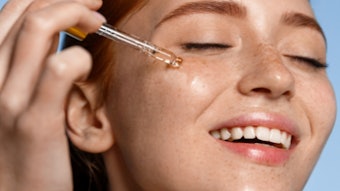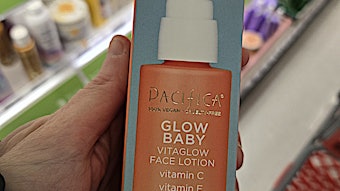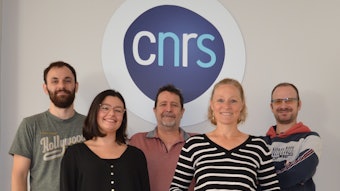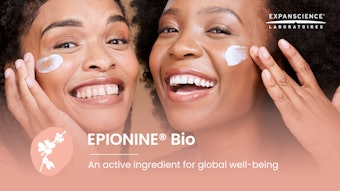Skin is the body’s largest organ, and it’s a complex one at that. Any formulator will tell you that efficacious skin care requires selecting the right ingredients and putting them together in a mindful way—and Anthony Vargas, founder and CEO of Vargas Cosmetics Inc., is no different. After 30 years in cosmetics R&D with Avon and Elizabeth Arden, he put his knowledge to the test by creating his own skin care products that marry efficacious actives with natural bases.
Vargas entered the cosmetics industry like many others—by chance, when he answered a newspaper advertisement for a laboratory technician position at Avon in 1979. Although he did not know anything about cosmetics at the time, he took the utmost care in researching his ingredients, which led to the launch of a number of successful products and honed his keen eye for technologies.
C&T: How did you get started in the cosmetics industry?
When I started at Avon, I did not even know there were cosmetic research facilities. I started formulating in the company’s skin care lab. Avon was very instrumental in teaching me the fundamentals of emulsions. I was involved in developing moisturizers and some acne products, as anti-aging really was not a thing yet.
C&T: What was one of the first lessons you learned?
One of the group leaders at Avon really encouraged [the chemists] to conduct research on skin care actives. He would assign us vitamins or other actives to research so we would know what they did. Our goal was to find actives that would help to keep the skin healthy.
I first became knowledgeable about vitamin C, which led to the development of the Collagen Booster Line Controlling Lotion, one of the first vitamin C (ascorbic acid)-based products. [Eventually,] we found that putting vitamin C in an anhydrous base was best. At first, we put it in creams and lotions, but it would degrade within a few days; I went into the stability cabinet and the tops of the jars had popped off. The gas developed from the vitamin C was popping off the caps.
Vitamin C is popular today for its role in collagen production, an even skin tone and regulating melanin production. Retinol was another active we looked at quite a bit. There are problems with stability of retinol, too, and it works better in an anhydrous base.
C&T: What spurred the evolution of skin care into anti-aging?
Around 1982, Elizabeth Arden came out with their Millennium line, where they had proven that they could stimulate cell turnover using the dansyl chloride test. That is what really turned the industry onto treatment products and anti-aging, and it really kicked off Avon’s research. The company gave out grants and brought in academia. From that research, we would gain new actives and newer understanding of skin.
C&T: Describe a notable anti-aging skin care product you formulated.
When Unilever bought Elizabeth Arden, we gained access to Unilever’s vast research. We were working on a product with ceramides, and the Unilever team gave us research it had conducted and patented on ceramide 1. It is the molecular rivet that holds the lipid layers together in the stratum corneum. We immediately put that into our product, which was in capsule form, and it became a benchmark [now Ceramide Capsules Daily Youth Restoring Serum].
When our marketing group came up with the concept for a gel capsule with a Saturn shape, we were told that the shape was not possible. After an engineer said he might be able to do it, I spent eight months perfecting the formulation, which had to be anhydrous.
C&T: What is one of the most important things you have learned about skin?
Cells have a predetermined turnover rate programmed into them [Hayflick theory], and accelerated cell turnover rate can result in signs of premature aging in young consumers. It is best to keep cells at a constant cell turnover rate, and we investigated an iris bulb extract that did this. Many people think that regular exfoliation is needed, but for the young consumer, this can do more harm than good.
C&T: Have you worked with any other notable technologies?
When I was at Arden, the CEO wanted me to look at a new technology that Allergan had patented—idebenone. At first, it seemed like another antioxidant, but the testing was conducted by all the top researchers. The results they had were unbelievable, and I knew it was a great opportunity, so we signed a deal. However, we were challenged with idebenone’s color—it is orange, and turned the product orange. You could put a bunch of titanium dioxide in the formulation to whiten it, but then it would look chalky. I told marketing to embrace the orange color and tout that if it is orange, you know it is authentic. From there, the [Prevage] line just evolved.
C&T: What advice would you give to a novice formulator?
Make sure you know everything about the ingredients in the formulation and their compatibility before formulating. Specifically, make sure the actives are compatible with the base. Before Parsol 1789 was approved, we started using it at Avon in a daily use sun care product, putting it in the oil phase like everything else. Our product was turning pink because we did not know we needed chelating agents.
C&T: What types of skin care products are the most difficult to formulate?
Serums/treatment products because the active must be stable in the prototype base that marketing wants. These products must deliver efficacy at the right activity level. The consumer is often of the opinion that more is better, but that is not always the case. Sometimes more active can be detrimental.
I once formulated a product that was more effective and less irritating at half the concentration requested, which was shown in clinical testing. Marketing insisted on the higher concentration because it thought that is what the consumer wanted. The industry is sometimes doing itself a disservice by putting percentages on labels, because more isn’t always better. We should communicate to the consumer to look at activity rather than getting hung up on concentration levels of actives.
C&T: What technologies/innovations do you think have revolutionized personal care?
Retinol is still one of the most touted actives out there. There is research being conducted on vitamin A derivatives that are more effective and less irritating than retinol, but they are still working on stability. Other revolutionary raw materials include AHAs, peptides and antioxidants. What is interesting about peptides is that they are made of amino acids, so they are not going to cause any irritation. Antioxidants such as vitamin C, vitamin E and those found in botanicals are extremely important in skin care.
C&T: How did you use your formulating experience to create your own line?
I developed a line that I think is right for the consumer. I wanted the products to be effective and safe. There were actives out there that I knew worked, so I combined those with natural bases. I’m not going to put anything in there that can come back to haunt me.










